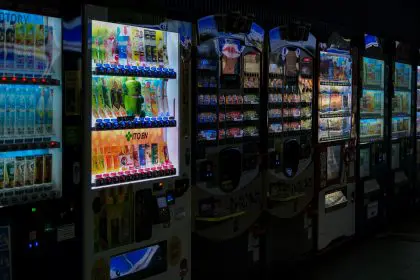The coronavirus pandemic has revealed numerous unexpected ways the virus affects the human body, extending far beyond the commonly known respiratory symptoms. Among these surprising manifestations are distinctive nail changes that can appear weeks or months after infection, affecting up to one in five people who contract the virus.
These nail alterations, now recognized as legitimate indicators of coronavirus infection, provide valuable insights into how the virus impacts various body systems. Understanding these changes helps individuals recognize potential delayed symptoms while distinguishing between normal nail variations and those requiring medical attention.
Understanding the connection between COVID and nail health
The relationship between viral infections and nail changes isn’t entirely new in medical literature, but the coronavirus has brought unprecedented attention to this phenomenon. The virus’s ability to trigger systemic inflammation affects multiple body systems, including the tiny blood vessels and tissues that support nail growth.
Nail formation occurs in the nail matrix, located beneath the cuticle area, where cells divide and create the nail plate that grows outward. This process requires consistent blood flow and nutrient delivery to maintain healthy nail development. When coronavirus infection disrupts these systems, visible changes appear in the nail structure.
The immune system’s response to coronavirus infection creates inflammatory conditions that can compromise blood circulation to extremities, including the nail beds. This disruption manifests as various visible changes that emerge as the affected nail tissue grows outward over time.
Timeline of nail symptom development
COVID-related nail changes don’t appear immediately during active infection but develop as delayed symptoms that can emerge anywhere from days to several months after initial illness. This delayed timeline often makes it difficult for people to connect their nail changes to previous coronavirus infection.
The timing varies significantly based on individual immune responses, infection severity, and overall health status. Some people notice changes within two weeks of infection, while others may not see symptoms until three to six months later as the affected nail tissue gradually grows outward.
Understanding this delayed timeline helps individuals recognize potential connections between current nail changes and past illness, even when the infection occurred months earlier. The gradual nature of nail growth means that symptoms may persist for extended periods as healthy nail tissue slowly replaces the affected areas.
Horizontal groove formations and growth disruption
One of the most common COVID-related nail changes involves the formation of horizontal grooves or indentations across the nail surface. These distinctive marks, known as Beau’s lines, result from temporary interruption of normal nail growth during illness.
The grooves form when the nail matrix experiences stress or trauma during the acute phase of infection, causing a temporary halt or slowdown in nail cell production. As nail growth resumes, the disrupted area creates a visible depression that moves outward as the nail grows.
These horizontal marks typically appear identical across multiple nails on both hands and feet, distinguishing them from injury-related grooves that usually affect individual nails. The uniformity of appearance across multiple nails suggests a systemic cause rather than localized trauma.
The depth and prominence of these grooves often correlate with infection severity, with more serious illness producing deeper, more noticeable indentations. As healthy nail growth resumes, these marks gradually move toward the nail tip and eventually disappear as the nail grows out completely.
Color changes and vascular effects
Coronavirus infection can produce distinctive color changes in nails that reflect the virus’s impact on blood vessels and circulation. These color alterations range from subtle tinting to dramatic discoloration that significantly changes the nail’s appearance.
Red or orange discoloration often appears as patches or streaks across the nail surface, indicating damage to tiny blood vessels beneath the nail plate. This vascular damage results from inflammatory processes triggered by the immune system’s response to infection.
The characteristic red half-moon pattern around the nail base represents one of the most recognizable COVID-related nail changes. This distinctive appearance results from inflammation affecting the blood vessels in the lunula area, creating visible redness that contrasts with the normal white appearance.
Some individuals develop transverse bands of discoloration that run horizontally across the nail, similar to the pattern seen with horizontal grooves but involving color changes rather than structural indentations. These bands may appear weeks after infection as the affected nail tissue becomes visible.
White line formations across nails
Horizontal white lines represent another common manifestation of COVID-related nail changes, appearing as distinct bands that run across the width of affected nails. These lines, known as Mees’ lines, develop when illness disrupts normal nail protein formation.
The white appearance results from alterations in nail composition during the acute illness phase, creating areas of different density or protein structure that appear lighter than surrounding nail tissue. These lines maintain their appearance as they grow outward with normal nail development.
Multiple white lines may appear on the same nail if the individual experienced prolonged illness or multiple episodes of infection. The spacing between lines can provide insights into the timing and duration of the illness that caused their formation.
These white lines gradually move toward the nail tip as growth continues, eventually disappearing when the affected nail tissue is trimmed away. The process can take several months for fingernails and up to a year or more for toenails due to their slower growth rate.
Nail separation and structural changes
In more severe cases, coronavirus infection can cause actual separation between the nail plate and the underlying nail bed, a condition called onycholysis. This separation typically begins at the nail tip and may progress toward the base if left untreated.
The separation occurs when inflammation affects the attachment structures that hold the nail plate to the nail bed, weakening the bond between these tissues. Unlike traumatic nail separation, COVID-related onycholysis usually develops gradually and may not cause immediate pain.
The separated areas often appear white or yellow due to air trapped beneath the nail plate. These spaces can become vulnerable to secondary bacterial or fungal infections if not properly cared for, potentially complicating the healing process.
Early recognition of nail separation allows for appropriate care measures that can prevent infection and promote proper healing as new healthy nail tissue grows to replace the affected areas.
Impact on both fingernails and toenails
COVID-related nail changes can affect both fingernails and toenails, though the timing and appearance may differ between hands and feet. Fingernails typically show changes earlier due to their faster growth rate, while toenail symptoms may not become apparent until months later.
The severity of changes may also vary between fingers and toes, with some individuals experiencing more pronounced effects in fingernails while others notice primarily toenail involvement. This variation likely relates to differences in blood circulation and immune system responses between different body areas.
Toenail changes often persist longer than fingernail symptoms due to the slower growth rate of toenails. Complete resolution of toenail symptoms may require 12 to 18 months, compared to six months or less for fingernail recovery.
Distinguishing COVID nails from other conditions
Several other health conditions can cause similar nail changes, making it important to consider the full clinical picture when evaluating suspicious symptoms. Nutritional deficiencies, other viral infections, certain medications, and autoimmune conditions can all produce comparable nail alterations.
The key distinguishing features of COVID-related nail changes include their timing relative to known or suspected infection, the pattern of involvement across multiple nails, and the specific combination of symptoms present. The delayed onset and gradual development also help differentiate these changes from acute trauma or chemical exposure.
Concurrent symptoms such as lingering fatigue, breathing difficulties, or other long-COVID manifestations may support the connection between nail changes and previous coronavirus infection.
When nail changes require medical evaluation
While most COVID-related nail changes resolve naturally as healthy nail tissue grows out, certain symptoms warrant professional medical evaluation to rule out complications or underlying conditions.
Signs of secondary infection include increasing pain, swelling, redness around the nail area, pus formation, or foul odors emanating from affected nails. These symptoms suggest bacterial or fungal infection that requires specific treatment.
Nail changes that worsen over time rather than gradually improving may indicate ongoing inflammation or other health issues that need addressing. Progressive separation, increasing discoloration, or development of new symptoms should prompt medical consultation.
Individuals with diabetes, compromised immune systems, or circulation problems should seek evaluation more readily, as they face higher risks of complications from nail changes and secondary infections.
Care strategies for affected nails
Proper nail care during the healing process can promote healthy recovery while preventing complications. Gentle cleaning with mild soap and water helps maintain hygiene without causing additional trauma to affected nails.
Keeping nails trimmed short reduces the risk of catching or tearing, which could worsen existing damage or delay healing. Use clean, sharp nail clippers and avoid aggressive filing or manipulation of affected areas.
Moisturizing the nail and surrounding skin helps maintain flexibility and prevents cracking that could provide entry points for infection. Choose fragrance-free, gentle moisturizers that won’t irritate sensitive tissues.
Protecting affected nails from further trauma through appropriate footwear choices and careful handling during daily activities supports the natural healing process.
Recovery expectations and timeline
Most COVID-related nail changes resolve completely as healthy nail tissue replaces the affected areas through natural growth processes. The timeline for full recovery depends on the location and extent of changes, with fingernails typically recovering faster than toenails.
Patience is essential during the recovery process, as nail growth occurs slowly and visible improvement may not be apparent for weeks or months. Consistent care and protection of affected nails support optimal healing outcomes.
Some individuals may notice that their nails appear slightly different even after full recovery, with subtle changes in thickness, texture, or growth patterns. These long-term effects are generally minor and don’t typically cause functional problems.
Understanding COVID-related nail changes empowers individuals to recognize these symptoms, provide appropriate care, and seek medical attention when necessary. As our knowledge of coronavirus effects continues to expand, awareness of these delayed manifestations becomes increasingly important for comprehensive post-infection health monitoring.












